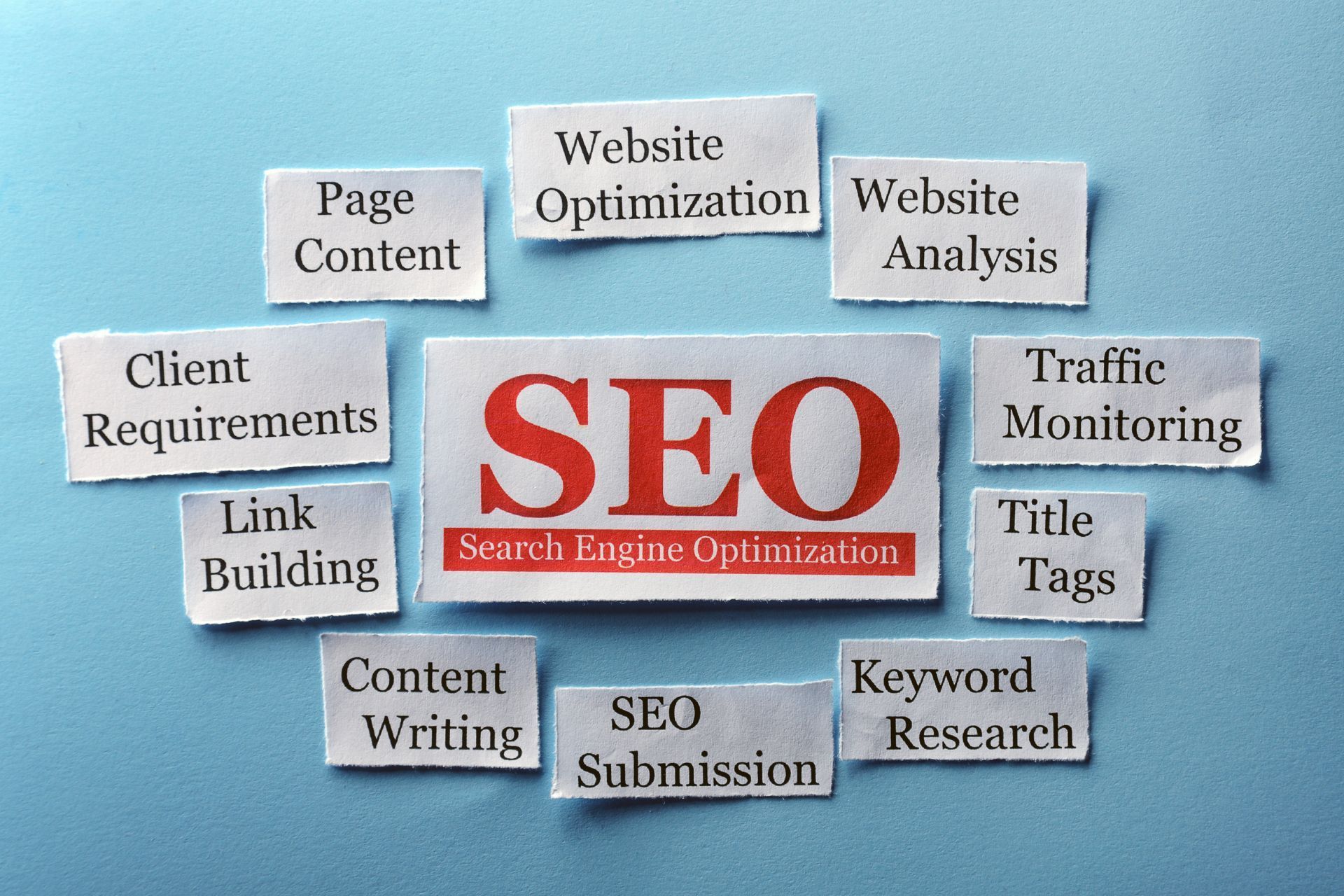SEO and Web Design: How to Build an Effective Website
In today's digital age, having a visually appealing website is just as important as optimizing it for search engines. While designing a visually stunning website can capture your users' attention, ensuring your website is SEO-friendly is key to converting visitors into customers.
By combining effective web design with
search engine optimization (SEO) strategies, you can create a website that looks aesthetically pleasing, attracts organic traffic, and achieves higher rankings on search engine results pages (SERPs).
The Impact of Web Design on SEO
A well-designed website ensures smooth navigation, fast loading speed, and an intuitive user interface, all of which are crucial for not only enhancing user experience but also improving SEO rankings. Factors such as mobile responsiveness, optimized images, structured URLs, clean code, and easy-to-navigate menus significantly influence your website's search engine visibility. Search engines reward user-friendly websites, and investing in user-centric web design will significantly boost your SEO efforts.
Understanding the Interplay between SEO and Web Design
Many believe that SEO and web design are two distinct entities, but in reality, they go hand in hand. No matter how aesthetically pleasing your website is, if it doesn't rank well in search engine results pages (SERPs), it won't reach its full potential. Integrating SEO principles into your web design strategy will pave the way for increased organic traffic, higher visibility, and improved user experience.
SEO and Web Design Best Practices
With the majority of online users accessing websites through their mobile devices, having a mobile-responsive website is crucial. Search engines prioritize mobile-friendly websites, as they provide a seamless user experience across devices, leading to enhanced visibility and higher rankings.
1. Start with User Experience (UX)
When building a website, prioritize user experience. Ensure your website is easy to navigate, provides a seamless browsing experience, and loads quickly. Intuitive navigation, proper categorization, and clear calls-to-action (CTAs) are key elements of a well-designed website that encourages users to explore further.
2. Mobile Responsiveness Matters
With the increase in mobile internet usage, having a mobile-responsive design has become essential. Google and other search engines prioritize mobile-friendly websites in their ranking algorithms, so failing to optimize your website for mobile devices can negatively affect your search engine rankings and user experience.
3. Optimize Page Load Speed
The loading speed of your website is critical for retaining visitors and achieving better search rankings. Slow-loading websites tend to have higher bounce rates, resulting in lost opportunities. Optimize your website's images, code structure, and hosting platform to deliver a fast and seamless experience to your users.
4. Conduct Keyword Research
Keyword research is pivotal for optimizing your website's content and driving organic traffic. Use keyword research tools to identify high-volume, relevant keywords related to your industry and target audience. Integrate these keywords appropriately in your website's headlines, meta descriptions, URLs, and body content to improve search engine visibility.
5. Create Engaging and High-Quality Content
Producing high-quality, engaging content is fundamental for successful SEO efforts. Search engines prioritize websites that consistently publish fresh, valuable, and informative content. Incorporate your target keywords naturally throughout your content while providing value to your audience. Blogs, infographics, videos, and interactive elements can all boost user engagement and encourage sharing.
6. Optimize On-Page Elements
Properly optimizing on-page elements is crucial for SEO. Pay attention to meta titles, meta descriptions, header tags, alt text for images, and URL structure. Each of these elements provides context to search engines about your website's content and improves its visibility in search results.
7. Build Quality Backlinks
Earning quality backlinks from reputable websites is an effective way to improve your website's authority and ranking. Engage in guest blogging, promote your content on social media, and participate in industry-related forums to gain exposure and attract organic backlinks to your website. Quality over quantity should be your motto when building backlinks.
8. Invest in Technical SEO
Technical aspects of your website play a significant role in SEO. Regularly audit your website for crawl errors, broken links, duplicate content, and other technical issues. Optimize your sitemap, and robots.txt file, and ensure proper indexing of your website. Utilize webmaster tools to monitor your website's performance and make necessary optimizations.
Use SEO and Web Design for the Success of your Site
Creating an effective website requires a perfect blend of appealing design and SEO strategies. The synergy between SEO and web design plays a fundamental role in enhancing your website's performance. By integrating SEO practices into web design, you create a user-friendly website that encourages higher visibility, increased organic traffic, and improved conversion rates.
SEO and web design are not isolated tasks; they work together to create a seamless and optimized user experience. Regularly monitoring performance and making necessary adjustments will help maintain an effective website.
Talk with an Expert today!






